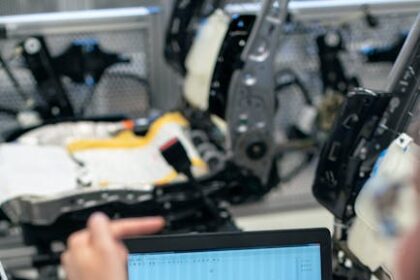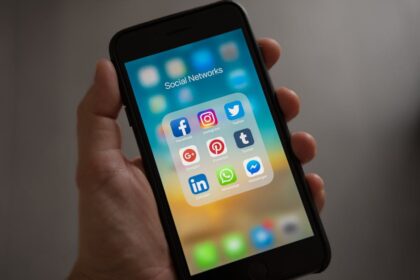Understanding LinkedIn Ad Engagement: Foundations and Metrics
Boosting engagement on LinkedIn Ads transcends mere click-through rates; it’s about fostering meaningful interactions, building brand affinity, and converting passive viewers into active participants and ultimately, loyal customers. True engagement signifies that your message resonates with your target audience, prompting them to like, comment, share, follow, and even initiate conversations. High engagement signals to LinkedIn’s algorithm that your content is valuable, potentially leading to better ad placement, lower costs, and improved overall campaign performance. Key engagement metrics include Click-Through Rate (CTR), comment rate, share rate, reaction rate (likes, celebrates, insightful, curious, etc.), follower growth, and video view completion rates. A holistic view of these metrics provides a comprehensive understanding of an ad’s effectiveness in capturing and retaining audience attention.
Strategic Foundations for High Engagement
Achieving high engagement begins long before an ad is launched. It requires a meticulous strategic framework built upon clear objectives, profound audience understanding, and a robust content strategy tailored specifically for the LinkedIn ecosystem.
Defining Clear, Engagement-Centric Objectives:
Before crafting a single ad, delineate what “engagement” means for your specific campaign. Is it about sparking conversations, increasing brand awareness, driving website traffic, generating leads through content downloads, or growing your follower base? Each objective demands a different approach to ad creative, targeting, and bidding strategy. For instance, if fostering discussion is paramount, your ad copy might pose questions and encourage comments. If driving video views is the goal, video length and captivating visuals become central. Without clear objectives, measuring success becomes arbitrary, and optimization efforts lack direction. Aligning objectives with specific key performance indicators (KPIs) ensures that every dollar spent is directed towards a measurable engagement outcome. This clarity allows for precise A/B testing and iterative improvements, refining your approach to resonate more deeply with your professional audience.
Profound Audience Understanding: The Bedrock of Relevance:
LinkedIn is unique due to its rich professional data. Leveraging this data to understand your audience deeply is non-negotiable for engagement. Go beyond basic demographics. Research their job functions, industry challenges, career aspirations, skills, interests, and the types of content they typically engage with. What problems are they trying to solve? What solutions are they seeking? What professional development opportunities excite them? Use LinkedIn’s Audience Insights tool, conduct surveys, analyze competitor ads, and even engage directly with your target persona on the platform to gather qualitative data.
Develop detailed buyer personas that encapsulate not just professional attributes but also their online behavior and content consumption habits on LinkedIn. This profound understanding informs every aspect of your ad strategy: the tone of voice, the visual style, the choice of ad format, and the call to action. An ad that genuinely speaks to a specific pain point or aspiration of your target audience will naturally elicit higher engagement than a generic message. Relevance is the ultimate driver of interaction. If an ad feels personalized and directly addresses their professional world, the likelihood of a like, comment, share, or click increases exponentially.
Crafting a Robust Content Strategy for Engagement:
Content is the engine of engagement. On LinkedIn, thought leadership, educational content, industry insights, and career development resources tend to perform exceptionally well. Your content strategy should be built around providing value, not just making a sales pitch.
- Educational Content: How-to guides, best practice lists, tutorials, and explainer videos that help your audience improve their skills or solve professional challenges.
- Thought Leadership: Articles, whitepapers, and posts that offer unique perspectives on industry trends, future outlooks, or innovative solutions. Position your brand or key executives as authorities in their field.
- Industry Insights and Data: Share original research, surveys, or insightful analyses of industry reports. Professionals on LinkedIn are hungry for data-driven perspectives.
- Success Stories and Case Studies: Demonstrate how your product or service has helped others achieve their goals, focusing on the measurable impact and professional growth.
- Behind-the-Scenes and Company Culture: Humanize your brand by sharing glimpses into your company’s values, team activities, and employee successes. This builds trust and relatability.
- Interactive Content: Polls, quizzes, and questions directly within your ad or linked content encourage direct participation.
- User-Generated Content (UGC): Encourage your audience to create content related to your brand or industry, then amplify it through ads. UGC often feels more authentic and trustworthy.
Each piece of content should have a clear purpose tied to an engagement objective. Is it designed to spark a debate in the comments, drive sign-ups for a webinar, or simply increase brand awareness through valuable views? Tailoring the content to the specific ad format and audience segment further amplifies its engagement potential. Consistency in content quality and delivery builds anticipation and fosters a loyal following, which significantly impacts overall ad performance.
Mastering Ad Formats for Maximum Impact
LinkedIn offers a diverse array of ad formats, each with unique strengths for driving different types of engagement. Choosing the right format for your message and objective is critical.
Single Image Ads: Visual Prowess and Simplicity:
Single Image Ads are the most common and versatile format. They are excellent for brand awareness, driving website traffic, and promoting specific content.
- Engagement Focus: A compelling image or graphic can instantly grab attention. Use high-resolution, professional visuals that are directly relevant to your message. Avoid stock photos that look generic.
- Design Tips: Incorporate your brand elements subtly. Use clear, concise text overlays if necessary, but keep them minimal. Think about imagery that evokes emotion or tells a quick story. For B2B, consider professional settings, technology in use, or clear data visualizations.
- Copy: The accompanying ad copy should be succinct yet powerful, reinforcing the image’s message and featuring a clear call to action (CTA). Experiment with questions, statistics, or benefit-driven statements.
Video Ads: Dynamic Storytelling and Retention:
Video is arguably the most engaging ad format on LinkedIn. It allows for rich storytelling, demonstrating product features, sharing testimonials, or delivering thought leadership directly.
- Engagement Focus: Video commands attention and can convey complex messages quickly. LinkedIn’s autoplay feature in the feed means the first few seconds are critical. Aim for high-quality production value.
- Content Strategy:
- Keep it Concise: While LinkedIn allows longer videos, shorter videos (15-60 seconds) generally perform better for initial engagement. For more in-depth content, consider a teaser video leading to a longer one on your landing page.
- Hook Early: Grab attention within the first 3 seconds. Use captivating visuals, a surprising statistic, or a direct question.
- Deliver Value: Whether it’s educational content, a product demo, or a personal story, ensure the video provides tangible value to the viewer.
- Optimize for Sound Off: A significant portion of LinkedIn users watch videos without sound. Use clear on-screen text, captions, and strong visuals to convey your message effectively even when muted.
- Clear CTA: Integrate your call to action naturally within the video and also in the ad copy.
- Metrics: Pay close attention to video view completion rates (25%, 50%, 75%, 100%) as a strong indicator of engagement and content resonance. Low completion rates suggest your video isn’t holding attention.
Carousel Ads: Multi-faceted Narratives:
Carousel ads allow you to showcase multiple images or videos within a single ad unit, each with its own headline and link. They are excellent for telling a sequential story, showcasing different product features, or presenting various service offerings.
- Engagement Focus: Carousels encourage interaction as users swipe through the cards. This active engagement can lead to higher time spent with the ad.
- Creative Strategy:
- Storytelling: Use each card to advance a narrative. For example, “problem-solution-benefit” or “feature 1 – feature 2 – feature 3.”
- Product Showcase: Highlight different aspects or use cases of a product.
- Testimonials: Feature multiple client testimonials.
- Educational Sequence: Break down a complex topic into digestible steps.
- Visual Consistency: Maintain a consistent visual theme across all cards for a cohesive experience.
Document Ads: In-depth Content Delivery:
Document Ads (PDF, PPT) allow users to view rich, multi-page content directly within the LinkedIn feed without leaving the platform. This is powerful for sharing whitepapers, e-books, reports, or detailed guides.
- Engagement Focus: This format offers a unique opportunity for deep engagement with valuable content. It positions your brand as a knowledge leader.
- Best Practices:
- High-Value Content: Only use this for truly valuable, in-depth content that warrants a multi-page format.
- Compelling Preview: Your ad copy and the initial few pages of the document must be compelling enough to encourage users to scroll through the entire document.
- Lead Gen Integration: While users can view the document natively, consider offering a lead gen form on the last page or within the ad copy for those who want to download it or access more resources.
Text Ads: Simplicity and Directness:
Located on the right-hand rail of the LinkedIn desktop feed, Text Ads are short, concise, and typically used for driving website traffic or increasing brand awareness at a lower cost.
- Engagement Focus: While not as visually dynamic, they rely on compelling, benefit-driven headlines and descriptions to attract clicks.
- Tips: Focus on strong value propositions and clear CTAs. Test different headlines and descriptions to see what resonates best with your audience.
Spotlight Ads: Personalized Call-to-Actions:
Spotlight Ads appear on the right-hand rail and feature a prominent image along with the user’s profile picture, offering a highly personalized experience. They are excellent for driving traffic to specific landing pages or promoting app installs.
- Engagement Focus: The personalization makes them highly engaging, as users see themselves as part of the ad.
- Use Cases: Ideal for promoting webinars, content downloads, or demonstrating specific product benefits relevant to a professional.
Lead Gen Forms: Streamlined Conversion (Indirect Engagement):
While primarily a conversion tool, Lead Gen Forms enhance engagement by simplifying the user journey. Instead of redirecting to an external landing page, they allow users to submit their pre-filled LinkedIn profile data directly within the ad.
- Engagement Focus: By removing friction, they increase the likelihood of data submission, indicating a high level of interest and engagement with the offer.
- Optimization: Keep the form fields minimal. Offer high-value content (e.g., exclusive whitepapers, webinar registrations) in exchange for information. Customize the thank-you message to reinforce value.
Event Ads: Driving Participation:
Designed specifically to promote LinkedIn Events, these ads drive registrations and attendance directly.
- Engagement Focus: They directly facilitate interaction with your events, fostering community and direct engagement with your brand’s live content.
- Tips: Clearly highlight the event’s value, speakers, and agenda. Leverage video or dynamic imagery to make the event ad stand out.
Conversation Ads: Interactive Storytelling (Message Ads):
Conversation Ads (formerly Message Ads) deliver personalized, interactive messages directly to a user’s LinkedIn inbox, allowing for a conversational flow with multiple calls to action.
- Engagement Focus: They offer a highly personalized, one-on-one engagement experience, mimicking direct communication.
- Strategy:
- Personalization: Start with a personalized greeting.
- Branching Paths: Design multiple pathways based on user choices, leading them to relevant content or actions.
- Value-Driven: Offer something valuable upfront – an exclusive guide, a free consultation, an invitation to a unique event.
- Clear CTAs: Ensure each choice leads to a clear and desirable outcome. This format excels in driving deeper engagement and qualification.
Precision Targeting for Unmatched Relevance
The unparalleled targeting capabilities of LinkedIn are its biggest strength for engagement. The more precisely you target, the more relevant your ads will be, and relevance is the cornerstone of engagement.
Demographic Targeting:
- Location: Target by country, state, city, or even specific postal codes. Essential for localized campaigns.
- Company Targeting: Target employees of specific companies (useful for ABM), by company industry, or company size.
- Job Experience Targeting:
- Job Function: Target by broad categories like Marketing, Sales, Engineering. Highly effective for B2B.
- Job Seniority: Reach executives, managers, or entry-level professionals. Crucial for tailoring messaging.
- Job Title: Target specific roles (e.g., “Chief Marketing Officer,” “Software Engineer”). Very precise but can limit reach.
- Skills: Target individuals who have specific skills listed on their profiles. Excellent for product adoption or recruitment.
- Education Targeting:
- Degrees: Target by specific degrees.
- Fields of Study: Target by academic disciplines.
- Schools: Target alumni of specific universities. Useful for recruitment or B2B sales in specific networks.
- Interest and Trait Targeting:
- Member Interests: Target users based on groups they’ve joined, content they’ve interacted with, or topics they follow. This is crucial for reaching audiences interested in specific industry trends or professional topics.
- Member Traits: Newer categories like “Career Interests” or “Professional Interests” can further refine your audience by their professional aspirations or broader industry engagement.
- Matched Audiences: The Power of Customization:
- Website Retargeting: Target users who have visited specific pages of your website. These users already know your brand and are highly engaged prospects. Tailor ads to their previous behavior.
- Account-Based Marketing (ABM) / Company List Upload: Upload a list of target companies or specific contacts. This is incredibly powerful for ABM strategies, allowing you to serve highly personalized ads to decision-makers at target accounts. The ads can directly address their company’s challenges or industry-specific opportunities.
- Contact List Upload: Upload an email list of prospects or existing customers. Useful for nurturing leads, cross-selling, or re-engaging dormant clients.
- Lookalike Audiences: Create new audiences that share similar attributes with your high-value existing customers or website visitors. This expands your reach to new, highly relevant prospects who are likely to engage.
- Exclusion Targeting: Just as important as inclusion. Exclude irrelevant audiences (e.g., existing customers for new lead generation campaigns, or competitors) to ensure your budget is spent only on prospects likely to engage.
The Synergistic Power of Layering Targeting Options:
Do not rely on a single targeting layer. Combine various options to create highly specific and relevant audience segments. For example, “Marketing Directors” (Job Seniority + Job Function) at “Fortune 500 companies” (Company Size) who have “visited your pricing page” (Website Retargeting) and are “interested in AI” (Member Interests). This hyper-segmentation ensures that your ad content is almost perfectly aligned with the needs and interests of the specific group viewing it, leading to dramatically higher engagement rates. Regularly review and refine your audience segments based on performance data to continuously optimize relevance.
Compelling Ad Creatives: The Heart of Engagement
Even with perfect targeting, your ads will fall flat without compelling creatives. This encompasses visuals, copy, and the call to action.
Visual Appeal (Images and Videos):
- High Quality and Professionalism: LinkedIn is a professional network. Use crisp, high-resolution images and videos. Blurry or pixelated media immediately detracts from credibility.
- Relevance: Visuals must be directly relevant to your message and your target audience. If you’re targeting finance professionals, use imagery that resonates with their world (e.g., data analytics dashboards, professional discussions).
- Brand Consistency: Integrate your brand colors, logos, and typography subtly but consistently. This builds brand recognition and trust.
- Human Element: People connect with people. Using images or videos with real people (employees, customers) can significantly increase relatability and engagement, especially if they are diverse and authentic.
- Infographics and Data Visualization: For B2B audiences, compelling data presented visually can be highly engaging.
- Motion Graphics: Even for image ads, subtle animation or dynamic text can capture attention in a scrolling feed.
Compelling Ad Copywriting:
Your ad copy is where your message truly comes to life. It needs to be persuasive, concise, and value-driven.
- Hook Empathy/Problem: Start by addressing a common pain point or challenge your target audience faces. Show you understand their world. “Struggling to scale your lead generation?”
- Value Proposition: Clearly articulate how your solution solves that problem or fulfills a need. Focus on benefits, not just features. “Our platform automates lead qualification, saving your sales team 20 hours a week.”
- Clarity and Conciseness: LinkedIn’s feed moves fast. Get to the point. Use simple, direct language. Avoid jargon unless your audience is highly technical and expects it.
- Storytelling: Even in short form, a mini-narrative can be powerful. “Meet Sarah, a busy marketing manager who transformed her workflow with X.”
- Scarcity and Urgency (Use Sparingly): For limited-time offers or event registrations, gentle urgency can drive action. “Only 5 spots left!” or “Register by Friday for early bird pricing.”
- Social Proof: Incorporate testimonials, customer counts, or awards. “Trusted by over 10,000 marketing professionals.”
- Questions: Directly engaging questions can spark comments and draw users into your content. “What’s your biggest challenge in [industry]?”
- Emojis (Tastefully Used): A relevant emoji can add visual appeal and break up text, but use them sparingly and professionally.
- Hashtags: Use a few relevant industry hashtags (#B2BMarketing, #SaaS, #DigitalTransformation) to increase discoverability and engagement, but don’t overdo it (2-3 is usually sufficient).
- Mobile Optimization: A significant portion of LinkedIn users access the platform on mobile. Ensure your copy is easily digestible on smaller screens, with short paragraphs and clear formatting.
Strong Call-to-Actions (CTAs):
Your CTA tells the user exactly what you want them to do next. It must be clear, compelling, and aligned with your objective.
- Be Specific: Instead of a generic “Click Here,” use specific action-oriented verbs: “Download Now,” “Register for Webinar,” “Learn More,” “Get a Demo,” “Sign Up,” “Request a Quote,” “Join the Discussion.”
- Prominent Placement: Ensure the CTA is easily visible in the ad copy and also on the landing page.
- Test Different CTAs: A/B test various CTAs to see which ones drive the highest engagement and conversion rates for your specific audience and offer.
- Consistency: The CTA in your ad should match the action users are expected to take on the landing page.
Brand Consistency and Personalization:
- Brand Voice: Maintain a consistent brand voice across all your ads. Is it authoritative, friendly, innovative, supportive?
- Personalization: Leverage LinkedIn’s dynamic fields where possible (e.g., in Conversation Ads) to make the ad feel directly addressed to the user. For general ads, strong targeting provides implicit personalization.
Budgeting, Bidding, and Optimization for Engagement
Effective budget and bidding strategies are not just about cost efficiency; they directly influence how often your ads are shown to the right people, thereby impacting engagement potential. Optimization is an ongoing process crucial for sustaining and improving engagement.
Understanding Bid Strategies:
LinkedIn offers various bidding options, each suited for different goals:
- Automated Bidding (Maximum Delivery): LinkedIn’s algorithm optimizes bids to get the most results for your budget. This is often a good starting point for engagement goals, as it focuses on maximizing ad impressions and interactions within your target audience.
- Manual Bidding (Target Cost/Cost Cap/Manual Bid): Allows you more control over your spend per outcome. While it requires more monitoring, it can be useful for very specific engagement goals or when you have a clear idea of your desired cost per engagement.
- Bid Types for Engagement:
- Cost Per Click (CPC): You pay per click. Good for driving website traffic or content downloads.
- Cost Per Impression (CPM): You pay per 1,000 impressions. Ideal for brand awareness and maximizing visibility.
- Cost Per Send (CPS) for Message Ads: You pay per message delivered. Relevant for Conversation Ads.
- Cost Per View (CPV) for Video Ads: You pay per video view. Essential for video engagement campaigns.
Optimizing for Engagement vs. Clicks vs. Conversions:
- Engagement Bidding: LinkedIn offers optimization goals specifically for engagement, such as “Brand Awareness” or “Video Views.” When you select these objectives, LinkedIn’s algorithm prioritizes showing your ads to users most likely to engage with that specific ad format (e.g., watch a video, react to a post).
- Beyond Clicks: While clicks are important, focus on deeper engagement metrics. A high CTR is good, but if users immediately bounce from your landing page or don’t interact with your content post-click, the initial engagement was superficial. Monitor time on page, pages per session, and conversion rates to gauge true interest.
- Balanced Approach: Sometimes, an ad designed for brand awareness (high video views, shares) might indirectly lead to conversions down the funnel, even if not directly optimized for them. Understanding this interplay is key.
Budget Allocation and Pacing:
- Start Small, Scale Up: Begin with a modest daily or total budget to test your creatives and targeting. Once you identify winning combinations, gradually increase your budget.
- Daily vs. Lifetime Budget: Daily budgets provide more consistent delivery, while lifetime budgets are good for campaigns with specific end dates.
- Pacing: LinkedIn’s delivery system aims to spend your budget evenly throughout the campaign duration. For engagement campaigns, consistent exposure is often more effective than bursts.
A/B Testing Methodologies for Engagement:
A/B testing (or split testing) is non-negotiable for optimizing engagement. Test one variable at a time to isolate its impact.
- Creative Variations:
- Headlines and Ad Copy: Test different opening lines, value propositions, and lengths.
- Visuals: Experiment with different images, video thumbnails, or video lengths.
- Call-to-Actions (CTAs): “Learn More” vs. “Download Now” vs. “Get a Demo.”
- Audience Segments: Test different targeting combinations to see which segments are most receptive to your message and engage the most.
- Ad Formats: See if an image ad performs better than a video ad for the same content piece, or if a carousel generates more interest than a single image.
- Bid Strategies: Compare automated vs. manual bidding for specific engagement goals.
- Analyze and Iterate: Let tests run long enough to gather statistically significant data. Focus on engagement metrics (CTR, reactions, comments, shares, video view duration) to determine the winner. Implement the winning variation and then start a new test. This iterative process continuously refines your engagement strategy.
Leveraging LinkedIn’s Optimization Features:
- LinkedIn Insights Tag: Install this pixel on your website. It’s essential for website retargeting, conversion tracking, and gaining insights into your website visitors’ LinkedIn demographics.
- Audience Expansion: While generally used with caution for tight targeting, for broader engagement campaigns, this feature can help LinkedIn find similar audiences who are likely to engage with your content. Test it to see if it yields positive engagement.
- Frequency Capping: Set limits on how many times a user sees your ad. Too high frequency can lead to ad fatigue and decreased engagement. Too low, and your message might not register. Find the sweet spot.
- Demographic Reporting: Use LinkedIn’s detailed reporting to understand who is engaging with your ads. This can reveal unexpected high-performing segments or confirm your ideal customer profile, further refining future targeting.
Post-Click Experience and Landing Page Optimization
Engagement doesn’t end with a click or a reaction on the LinkedIn feed. The post-click experience, particularly your landing page, is critical for converting initial interest into deeper engagement and ultimately, desired actions. A disjointed or frustrating post-click experience will quickly erode any goodwill generated by your ad.
Seamless User Journey:
- Expectation Alignment: Your landing page must flawlessly continue the narrative and promise made in your LinkedIn ad. If your ad promises a “free guide,” the landing page should immediately present the guide for download, not another sales pitch.
- Consistency in Messaging and Design: The headline, visuals, and key selling points on your landing page should be consistent with your ad creative. Use similar branding, colors, and tone. This builds trust and reduces confusion.
- Reduced Friction: Minimize the number of clicks or steps required for the user to complete the desired action. If it’s a lead gen form, keep it concise. If it’s content, make it easily accessible.
Relevance and Specificity:
- Dedicated Landing Pages: Avoid sending ad traffic to your generic homepage. Create dedicated landing pages for each ad campaign or even for specific ad variations. These pages can be highly optimized for a single goal.
- Tailored Content: Ensure the content on the landing page is highly relevant to the ad they clicked. If the ad was about “AI in Marketing,” the landing page shouldn’t be about general marketing solutions.
Loading Speed:
- Instant Gratification: In today’s fast-paced digital environment, users expect pages to load almost instantly. Slow loading times (even a few seconds) lead to high bounce rates and a negative user experience.
- Optimization: Optimize images, leverage browser caching, and use a reliable hosting provider. Utilize tools like Google PageSpeed Insights to identify and address performance bottlenecks.
Clear Value Proposition:
- Immediate Clarity: Upon landing, users should immediately understand what the page offers and why it’s valuable to them. The value proposition should be front and center, above the fold.
- Benefit-Driven Language: Reiterate the benefits of your offer, emphasizing how it solves their problems or helps them achieve their goals.
Conversion Optimization Elements:
While the primary focus is engagement on LinkedIn, the landing page extends that engagement into actionable outcomes.
- Prominent Call to Action (CTA): Ensure your CTA button is visually distinct, uses action-oriented language, and is easily accessible.
- Concise Forms: If collecting leads, ask for only the essential information. The fewer fields, the higher the conversion rate. Consider using LinkedIn’s pre-fill feature on your forms if the platform supports it for your CRM.
- Social Proof: Include testimonials, client logos, case study snippets, or trust badges on your landing page to build credibility and encourage conversion.
- Clear Navigation (or Lack Thereof): For dedicated landing pages, sometimes removing extraneous navigation elements can focus the user’s attention solely on the desired action, reducing distractions.
- Mobile Responsiveness: Ensure your landing page is fully responsive and provides an excellent experience on all devices, especially mobile, given the prevalence of mobile LinkedIn usage.
- A/B Testing Landing Pages: Continuously test different headlines, hero images, CTA button colors/text, form layouts, and content placements on your landing pages to optimize for higher conversion rates and deeper engagement.
Advanced Engagement Tactics on LinkedIn Ads
Beyond the foundational elements, several advanced strategies can significantly amplify engagement on LinkedIn Ads. These often involve integrating ads with broader content and relationship-building initiatives.
Thought Leadership Amplification:
- Identify Key Opinion Leaders (KOLs): Determine who within your organization are subject matter experts. These could be executives, senior engineers, or industry specialists.
- Content Creation: Encourage them to create valuable, insightful content (articles, videos, posts) that addresses industry trends, challenges, or offers unique perspectives. This content should genuinely educate and inspire, not overtly sell.
- Ad Amplification: Use LinkedIn Ads to amplify this thought leadership content. Target relevant audiences who would benefit from these insights. This positions your brand as a valuable resource, not just a vendor.
- Engagement Focus: Ads promoting thought leadership often lead to higher shares, comments, and saves because the content is intrinsically valuable and less promotional. This builds authority and trust, which are long-term engagement drivers.
Employee Advocacy Integration:
- Empower Employees: Encourage your employees to share company news, industry insights, and especially your ad content organically. When employees share, it often lends more credibility than official company pages.
- Internal Communication: Provide employees with easy-to-share links, pre-written copy suggestions, and compelling visuals for new ad campaigns or important content.
- Amplify Employee Posts: If a particular employee’s post related to your brand or industry gains significant organic traction, consider boosting it with LinkedIn Ads. This leverages authentic engagement and can be highly effective because it comes from an individual, not just a company page.
- Benefits: Employee advocacy significantly extends your reach, adds authenticity, and often leads to higher engagement rates because personal connections on LinkedIn are strong.
Community Building Through Ads:
- LinkedIn Groups: While direct ad placements in groups are limited, you can use ads to promote your own LinkedIn Groups or relevant industry groups where your target audience congregates.
- Event Promotion: As discussed, use Event Ads to drive registrations for webinars, virtual conferences, or live Q&A sessions. These events foster direct interaction and build a sense of community.
- Polls and Questions: Run ads featuring polls or open-ended questions related to industry trends or challenges. This directly invites comments and discussion, building an engaged community around your brand’s insights.
- Replying to Comments: Actively engage with comments on your ads. Respond thoughtfully to questions, thank users for shares, and join in discussions. This shows your brand is active and values engagement.
Leveraging LinkedIn Live and Events with Ads:
- Promote Live Streams: Use LinkedIn Ads to drive awareness and attendance for your LinkedIn Live broadcasts. A compelling ad creative with a direct link can significantly boost viewership.
- Repurpose Live Content: After a LinkedIn Live session, repurpose clips, key takeaways, or the full recording into video ads or document ads. Promote these “on-demand” resources to those who missed the live event. This maximizes the return on your content investment and extends engagement.
- Pre and Post Event Ads: Run pre-event ads to drive registrations and then post-event retargeting ads to share recordings or follow-up resources with attendees and those who expressed interest but didn’t attend.
Advanced Retargeting Sequences:
- Behavior-Based Retargeting: Segment your retargeting audiences based on their specific behavior.
- Website Visitors (Basic): General visitors to your site.
- Specific Page Visitors: Those who visited a pricing page, a specific product page, or downloaded a specific asset. Tailor ads to their exact interest.
- Video Viewers: Target users who watched a certain percentage of your video ads (e.g., 50% or 75% complete). These are highly engaged users who warrant follow-up.
- Form Abandoners: Target users who started to fill out a lead gen form but didn’t complete it. Offer an incentive or reminder to finish.
- Multi-Stage Funnel Retargeting: Design a series of retargeting ads that move users through your sales funnel.
- Awareness Stage: Broad content to warm up cold prospects.
- Consideration Stage: Ads for whitepapers, case studies, and webinars.
- Decision Stage: Ads for demos, free trials, or consultations.
- Exclusion Lists for Retargeting: Crucially, exclude converted customers from your retargeting campaigns to avoid wasting budget and ensure your message is always relevant.
Account-Based Marketing (ABM) Ad Strategies:
- Identify Target Accounts: Work with your sales team to identify a list of high-value target companies.
- Map Decision Makers: Identify key roles and individuals within those accounts who influence purchasing decisions.
- Personalized Messaging: Craft highly personalized ad creatives and copy that speak directly to the challenges and opportunities specific to those companies or industries. Use company-specific references where appropriate (subtly, not overtly creepy).
- Multi-Format Blitz: Deploy a combination of ad formats (Image, Video, Document, Conversation Ads) to ensure your message reaches different individuals within the target account through various touchpoints.
- Team-Based Targeting: Target multiple individuals within the same target company to create a “surround sound” effect, ensuring consistent messaging across decision-makers.
- LinkedIn Matched Audiences (Company List Upload): This is the backbone of LinkedIn ABM, allowing precise targeting of your identified accounts.
- Measurement: Track engagement not just at the individual level, but at the account level. Are more people from your target accounts interacting with your ads? Are sales conversations initiated or accelerated?
Measuring and Iterating for Continuous Improvement
Engagement is not a static state; it’s a dynamic outcome influenced by myriad factors. Continuous measurement, analysis, and iterative optimization are paramount for sustaining and enhancing engagement on LinkedIn Ads.
Key Engagement Metrics to Track:
Go beyond basic clicks. Dive deeper into what truly signifies active interest.
- Click-Through Rate (CTR): While important, analyze it in context. A high CTR with a high bounce rate on the landing page indicates a mismatch. A low CTR often points to issues with targeting or ad creative.
- Social Actions (Reactions, Comments, Shares, Follows): These are direct indicators of how well your content resonates and whether it sparks conversation or inspires sharing.
- Comment Rate: High comment rates indicate strong interest and content that provokes thought. Analyze the nature of comments – are they positive, questions, or objections?
- Share Rate: Users share content they find valuable, insightful, or entertaining. A high share rate means your ad content has viral potential and extends your reach organically.
- Reaction Rate: While a simple ‘Like’ might seem minimal, a high volume of reactions indicates positive reception and basic agreement with your message. “Insightful” or “Curious” reactions are particularly valuable as they suggest deeper contemplation.
- Follower Growth: Ads can be optimized for follower growth. A steady increase indicates your content and brand are attracting relevant individuals to your page.
- Video View Completion Rates: For video ads, track completion rates (25%, 50%, 75%, 100%). Dropped engagement early in the video suggests issues with the hook or initial content. High completion rates indicate compelling storytelling and effective messaging.
- Time on Page/Session Duration (Post-Click): If your ad leads to a landing page, measure how long users stay and how many pages they visit. Longer duration and more pages indicate deeper engagement with your content.
- Lead Quality (for Lead Gen Forms): Are the leads generated through your engagement efforts qualified? This is the ultimate measure of effective engagement.
LinkedIn Analytics Deep Dive:
LinkedIn’s Campaign Manager provides robust analytics for understanding engagement:
- Performance Chart: Visualize trends over time for key metrics.
- Demographics: Understand who is engaging. Are your engaged users aligning with your target audience? This can help refine future targeting.
- Ad Performance: Compare the performance of different ad creatives and formats. Identify your top-performing ads and learn from their success.
- Conversion Tracking: If you have the LinkedIn Insight Tag installed, track specific conversions (e.g., downloads, sign-ups) that result from ad engagement.
- A/B Test Results: Directly view the performance comparison of your A/B tests to make data-driven decisions.
Attribution Models:
Understand how different touchpoints (including your LinkedIn Ads) contribute to overall conversions. Are your engagement-focused ads serving as crucial top-of-funnel touchpoints that lead to later conversions? Multi-touch attribution models can provide a clearer picture than last-click attribution.
Iterative Optimization Cycles:
Treat your LinkedIn ad campaigns as living entities that require constant care and adjustment.
- Regular Review: Set a schedule (e.g., weekly or bi-weekly) to review campaign performance.
- Identify Underperformers: Pause or modify ads with low engagement.
- Amplify Winners: Allocate more budget to ads or audience segments that are performing exceptionally well.
- Test New Hypotheses: Based on your analysis, formulate new hypotheses about what might improve engagement (e.g., “Video ads with a duration of 30-45 seconds will yield higher completion rates for this audience segment”). Design and run new A/B tests.
- Refine Targeting: If you see high engagement from an unexpected demographic, consider expanding your targeting to include them. If certain segments show consistently low engagement, consider excluding them or creating highly tailored ads specifically for them.
- Refresh Creatives: Ad fatigue is real. Users get tired of seeing the same ads repeatedly. Regularly refresh your ad creatives (images, videos, copy) to keep your campaigns fresh and engagement high.
Troubleshooting Low Engagement:
If your LinkedIn Ads are struggling to gain traction, systematically review these common culprits:
- Irrelevant Targeting: Are you reaching the right people? Is your audience too broad or too narrow?
- Weak Ad Creative: Is your ad visually appealing? Is the copy compelling and clear? Does it offer value?
- Lack of Clear CTA: Do users know what you want them to do?
- Poor Value Proposition: Is your offer genuinely interesting or useful to your target audience?
- Ad Fatigue: Have your ads been running for too long without creative refreshes?
- Misaligned Format: Is the ad format the best choice for your content and objective? A document ad for a short tip, for example, might be overkill.
- Inadequate Budget/Bidding: Is your budget too low to compete for impressions, or is your bidding strategy not optimized for engagement goals?
- Seasonality/External Factors: Are there broader industry trends or events that might be impacting your audience’s availability or interest?
Future Trends in LinkedIn Ads Engagement
The landscape of digital advertising, and LinkedIn’s role within it, is constantly evolving. Staying ahead of emerging trends is crucial for maintaining and boosting engagement.
AI in Ad Optimization and Personalization:
- Smarter Algorithms: LinkedIn’s algorithms will continue to leverage AI for more sophisticated ad delivery, predicting which users are most likely to engage with specific content and serving ads accordingly.
- Dynamic Creative Optimization (DCO): Expect more advanced DCO tools that automatically assemble ad variations (combining different headlines, images, CTAs) and serve the most effective combinations to individual users based on their real-time engagement data.
- AI-Powered Insights: AI will increasingly provide deeper, more actionable insights from your campaign data, identifying patterns and opportunities for engagement that human analysts might miss.
- Hyper-Personalization at Scale: AI will enable unprecedented levels of personalization in ad creatives and messaging, even for large campaigns, making ads feel more like one-on-one conversations.
Evolving Content Consumption and Interactive Formats:
- Short-Form Video Dominance: The rise of short, snackable video content (think Reels, TikTok) is influencing professional platforms. Expect continued emphasis on concise, impactful video ads (e.g., “Story Ads” or even shorter formats) on LinkedIn.
- Interactive Experiences: Beyond current Conversation Ads, anticipate more gamified and interactive ad experiences directly within the feed (e.g., interactive polls, quizzes, or mini-games integrated into ads) to boost dwell time and direct participation.
- Augmented Reality (AR) and Virtual Reality (VR) Integration: While still nascent in B2B ads, AR/VR could offer immersive product demos or virtual event experiences directly through ads in the future, dramatically enhancing engagement.
- Audio-First Content: As audio content (podcasts, Clubhouse-style rooms) grows, LinkedIn might explore audio ad formats or sponsorships within its audio features, providing new avenues for engagement.
Privacy Considerations and Adaptations:
- First-Party Data Emphasis: With increasing restrictions on third-party cookies and data sharing, the importance of first-party data (your own customer lists, website visitors) will grow even further for highly relevant targeting via Matched Audiences.
- Contextual Targeting: Expect a renewed focus on contextual targeting – placing ads alongside content that is thematically relevant to the ad itself, rather than solely relying on user data. This ensures high relevance even in a privacy-centric world.
- Transparency and Trust: Brands that are transparent about their data usage and consistently provide value will build stronger trust with their audience, leading to higher engagement.
Integration with Broader Ecosystems:
- Unified Marketing Platforms: LinkedIn Ads will likely integrate more seamlessly with broader marketing automation, CRM, and sales enablement platforms, enabling more sophisticated multi-channel campaigns and unified customer journeys, where LinkedIn engagement contributes to a larger lead scoring and nurturing system.
- Live Event & Community Focus: LinkedIn will continue to bolster its native event and community features. Ads promoting these direct engagement opportunities will become even more powerful.
The Human Element Remains King:
Despite technological advancements, the core principles of engagement will endure: authenticity, value, and connection. Ads that humanize your brand, tell compelling stories, solve real problems, and foster genuine professional relationships will always outperform purely transactional messages. Focusing on delivering intrinsic value through your ad content will be the most reliable strategy for sustained high engagement on LinkedIn.











